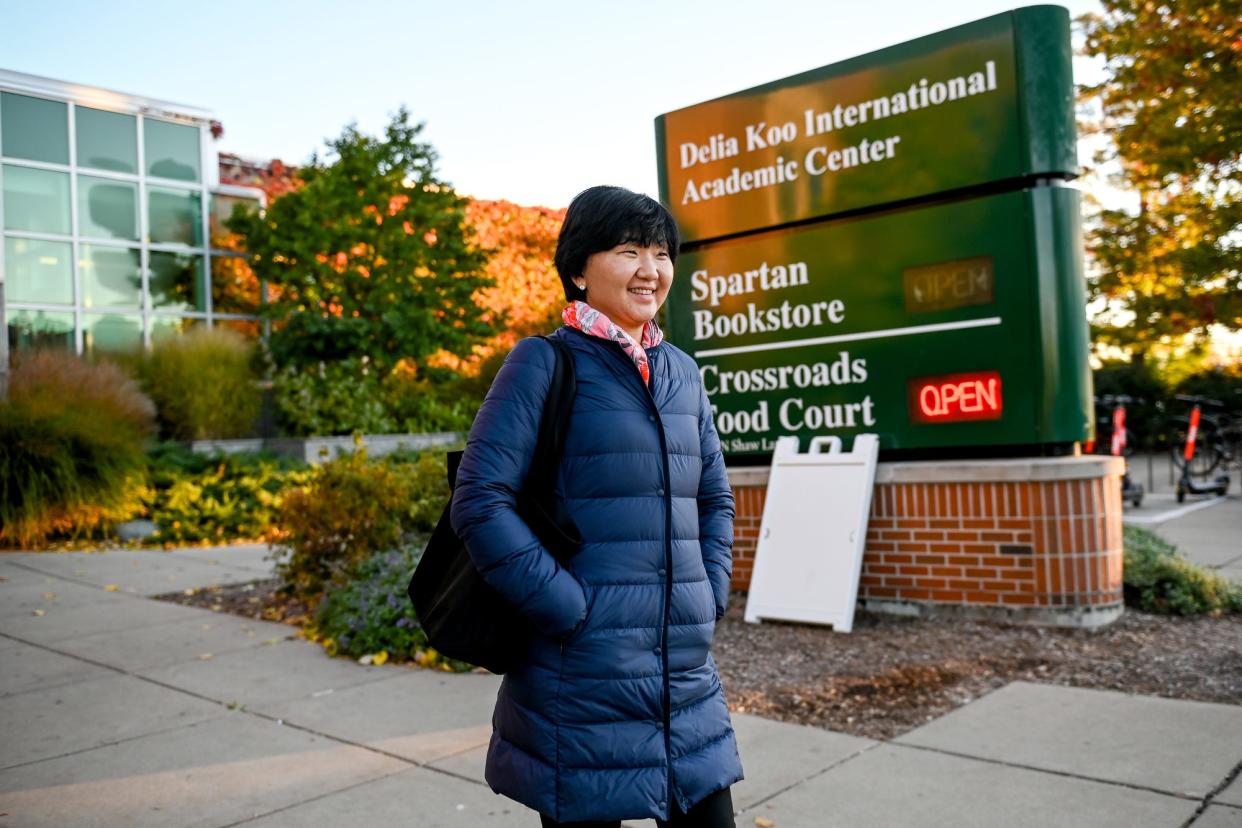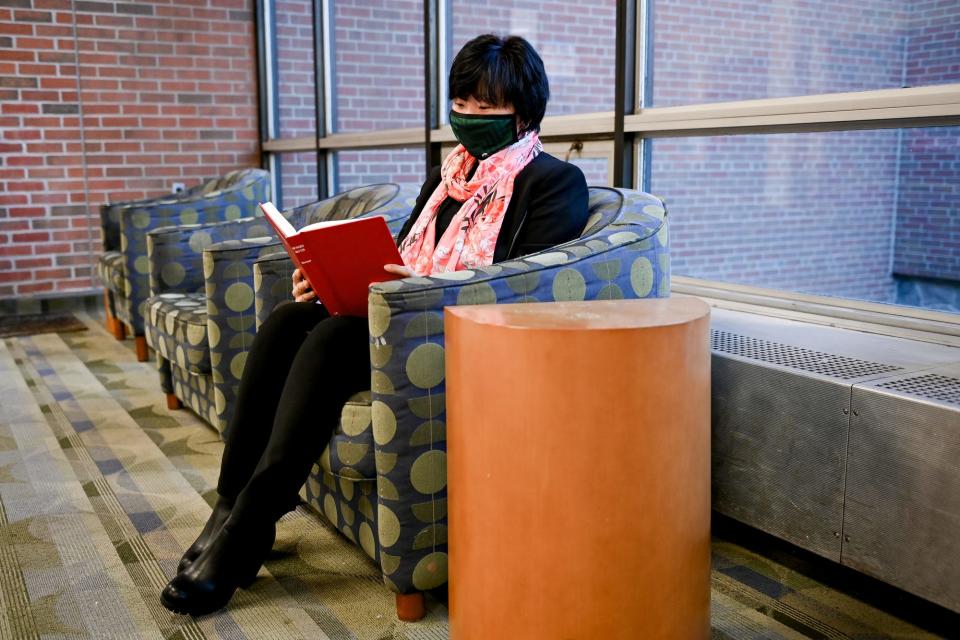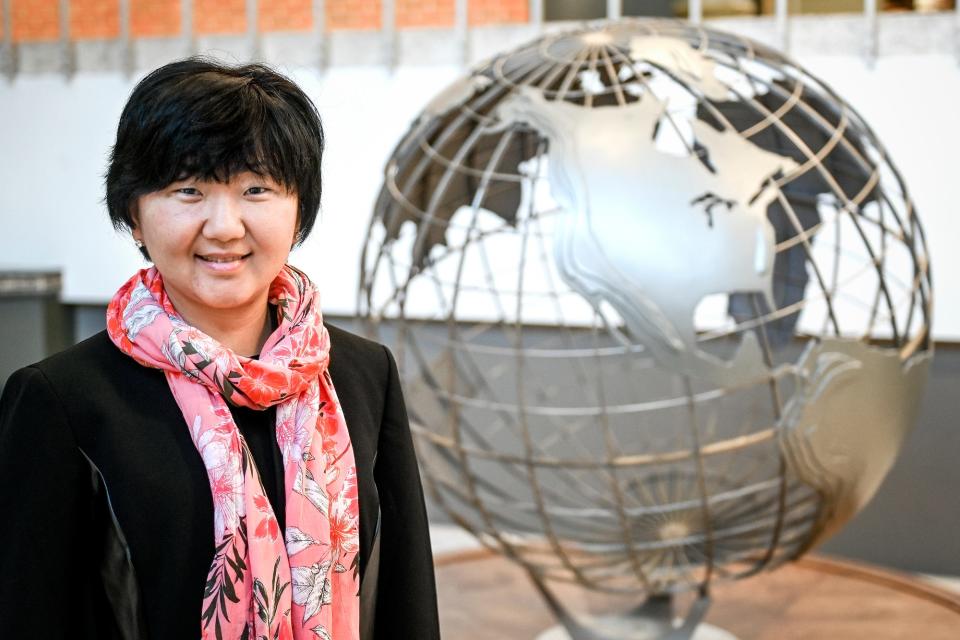Why MSU keeps losing international students

EAST LANSING — It took a 10,000-mile trip and a visit to campus for Aliya Bizhanova to make her decision: she was coming to Michigan State University to pursue a Ph.D.
Bizhanova is in the second year of a doctorate program in education policy and one of 10 students from Kazakhstan studying at MSU this fall. She finished her undergraduate degree at a university in Russia and earned her Master’s at Vanderbilt University in Tennessee.
High academic rankings and glowing recommendations from colleagues helped Bizhanova identify MSU. But she didn't pick the school until that visit in February 2020, when she met with faculty, staff and students.
“After the visit, I knew it was the place to be,” said the 38-year-old.
Bizhanova is one of 4,106 international students from 128 different countries enrolled at MSU this fall. They make up nearly a tenth of the student body, but their numbers have fallen from 4,540 students last fall and about 5,705 in 2019.
In fact, international enrollment at MSU fell for a seventh straight year this fall, from a peak of about 7,750 students in 2014 — 15 percent of the student body.
MSU was once a leader for international enrollment, cracking the top 10 universities in the country between 2010 and 2015, according to Open Doors reports compiled by the U.S. Department of State’s Bureau of Educational and Cultural Affairs and the Institute of International Education.
The decline in international enrollment presents demographic and financial issues for MSU and East Lansing. International students pay more than $42,000 per year in tuition, while domestic students pay about $40,726 and in-state students pay $14,914.
MSU isn't alone in having fewer international students on campus.
Last academic year, international enrollment in the U.S. dropped by nearly 20,000 students, from 1.09 million in 2018-19 to 1.07 million, according to the Institute of International Education data. The number of new international students at U.S. universities has fallen for five straight years.
The decrease can be at least partially blamed on COVID-19. But the trend of declining international enrollment began long before the pandemic.

COVID-19, U.S. unrest stymies international enrollment
Enrolling in a master’s program is challenging in its own right. Doing so at a college across the planet can feel nearly impossible.
Madina Dadajonova, from Uzbekistan, learned that the hard way when she tried to enroll in a Master of Business Administration program at MSU.
First, it took her six months to get her student visa and Certificate of Eligibility for Nonimmigrant Student Status documentation. Then, because the U.S. Embassy in Uzbekistan was closed during the pandemic, she had to travel to Kazakhstan to secure her student visa.
The visa was initially denied until MSU officials stepped in. She was allowed to take classes online starting in September 2020 while she waited for her visa to arrive. Because of the time difference, that meant taking classes at 4 and 5 a.m.
Dadajonova finally arrived in East Lansing in December 2020, as her first semester was ending.
Some international students faced their own struggles getting to MSU during the pandemic.
“The last two years, it’s been pretty difficult,” said John Ambrose, MSU’s director of admissions.
To address pandemic-related travel issues, MSU allowed international students to take MSU classes on the campuses of colleges and universities in their home countries. Nearly 70 students from around the globe are currently enrolled in those programs, Ambrose said.
Additionally, some international families have begun to fear for their children in the U.S. after seeing the mounting unrest, including immigration concerns at the U.S.-Mexico border and the Jan. 6 insurrection in Washington, D.C., Ambrose said.
“All of these things are making the news worldwide,” he said. “I would think moms and dads and guardians are concerned about sending their children somewhere they don’t know about or understand.”

To ease those concerns, admissions officials are taking a more personal approach. That means talking one-on-one with the students and families and trying to answer questions and quell safety concerns.
Much of that recruiting can be done in the students’ home countries in normal times, but COVID-19 forced MSU to stop international recruitment trips back in March 2020. Ambrose said those trips could resume next spring.
Meanwhile, competition for international students is at its highest point in a decade, both globally and within the U.S. More institutions have joined MSU in traveling abroad to recruit in recent years, Ambrose said.
More countries are also working to improve their own educational institutions in order to keep students at home rather than shipping them to the U.S. That's true in Uzbekistan, where Dadajonova said more educational institutions have cropped up, eliminating the need to leave to get an education.
Some researchers say U.S. immigration policy is also to blame. International enrollment began to fall nationwide in 2016 following “harsh rhetoric” and restrictive immigration policies implemented by the Trump administration, including travel bans and visa restrictions, according to the advocacy group FWD.us.
“The downturn after what had been fairly consistent growth ... suggests a significant change influenced by new factors," the group wrote in a May 25 report. "In fact, students and higher education institutions report that U.S. federal policies and rhetoric on immigration are discouraging prospective students from enrolling in American schools.”
Influx of Chinese students slows
From 2006 to 2014, Chinese students flocked to MSU, going from a little more than 600 students to nearly 4,800.
But fewer and fewer Chinese students have enrolled at MSU each year since.
MSU was at one time a national leader in enrolling Chinese students. In 2014, the Institute of International Education ranked MSU at the top in enrollment of Chinese undergraduates alone.
MSU began recruiting students from China earlier than most U.S. colleges, but other schools soon caught up. That meant more competition in the U.S. and abroad, and the flow of Chinese students to MSU slowed.
After enrolling 4,793 Chinese students in 2014, Chinese enrollment at MSU has fallen every year, hitting just 1,712 students this fall.
However, while international enrollment dropped among Chinese students, it rose among other nationalities.
The number of students coming to MSU from India increased for an eighth straight year this fall to 576 students. India historically sends the second most students to MSU behind China.
Other countries that once had little to no representation at MSU have become reliable sources of prospective students.
In the fall of 2008, just one international student from Bangladesh was enrolled at MSU. Now, 77 are enrolled, making Bangladesh the sixth most represented foreign country of 128 at MSU.
“We’re still excited about the students that we have,” Ambrose said.
Despite the downturn, many international students still see the U.S. as their ticket to an education and career. Bizhanova chose to come to the U.S. not just for the quantity of colleges, but for the quality of education.
“It’s the highest quality of higher education in the world,” she said.
And, Ambrose said, the students themselves are equally valued.
“International students for us are an important part of the fabric of our university,” he said. “We’ve been working with international students almost from day one when we opened the university. We’d be in a very different place without them. We think it’s very important to diversify the student population and continue to grow.”
Contact Mark Johnson at 517-377-1026 or at majohnson2@lsj.com. Follow him on Twitter at @ByMarkJohnson.
This article originally appeared on Lansing State Journal: Why MSU is losing international students
